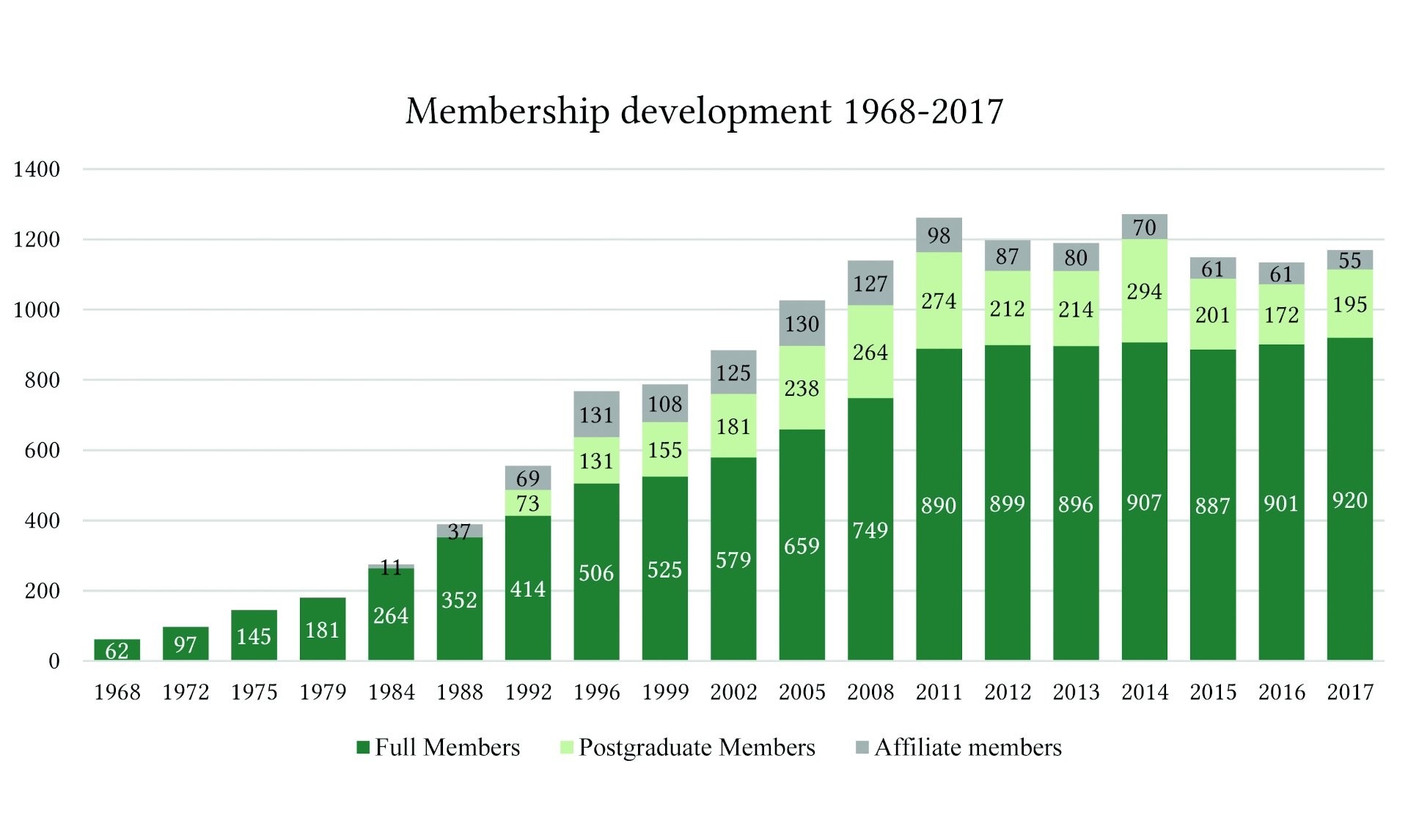Membership Growth

As the graph below shows the size and the composition of the membership of the Association is radically different from what it looked like in the early years. In 1968 the Association had 62 members. Currently, (early 2017) it has 1170 members. Although part of this growth is the result of the addition of two membership categories that did not exist at first (postgraduate members and affiliate members, most of whom are now full members), the growth has been spectacular. Aside from growing in size, the membership composition also underwent major changes. In 1968 only 10 countries (all European) were represented. Today members come from 48 different countries (30 European, 18 non-European countries). Of the grand total of 1170 members, about 1000 are European nationals. Hence, in terms of sheer numbers our Association remains predominantly European.
Looking only at Europe we cannot be blind to the fact that the distribution of members over the countries is skewed, with the lion share of members coming from only a few countries. On the other hand, and looking at the evolution over the years, the number of members coming from countries that were before absent or underrepresented has been growing steadily. This growth is undoubtedly due to a great many factors, but the active policy of the Association in this regard has certainly contributed to the present more positive state of affairs, directly or indirectly. As one example, organizers of Summer Schools have always been sensitive to select a more than sufficient number of participants from underrepresented countries. As another example, quite regularly the Association’s Bulletin publishes articles in which the state of social psychology in one or another of the underrepresented countries is described, hoping that the readership of the Bulletin might develop an interest in the work being done in these countries and eventually establish contact with colleagues from those countries. Over the years there have also been targeted actions, such as a widely distributed invitation to join the Association sent out to all known psychology institutions and organizations in Northern, Central and Eastern Europe. Some years later (in 2005), as already briefly mentioned in Carmen Huici’s testimonial, the Executive Committee set up a meeting with representative members from Central and Eastern Europe in order to promote social psychology and our Association in those countries. Finally, the choice of locations for the General Meetings constitutes yet another way in which the Association attempts to send out its message to all of Europe.
